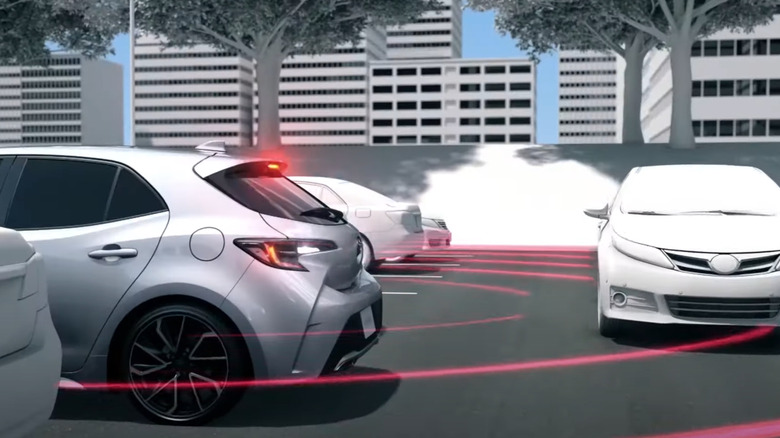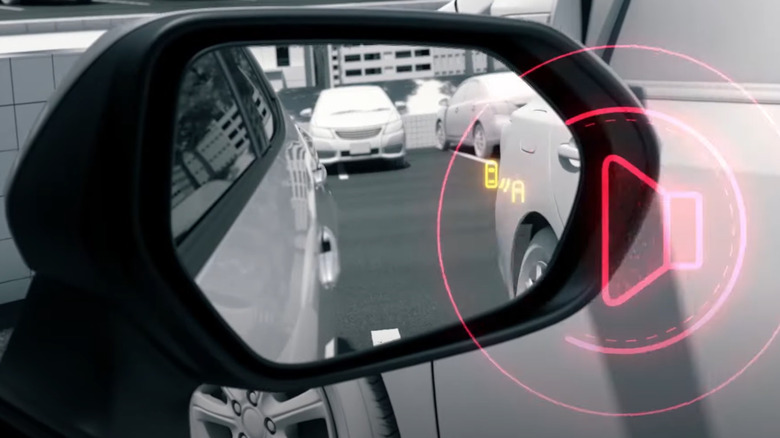What Does RCTA Mean In Relation To Cars? The Acronym & System, Explained
While advanced safety systems in a car can be exorbitantly expensive to repair and reset, there's little question that such systems are also making vehicles safer than ever for drivers. Given the technological advances that automobile manufacturers are continuing to make regarding protective features, it's safe to imagine that cars, trucks, SUVs, and other vehicles operated by humans will only get safer in the future.
As for the present, even as valuable as the best safety features are in modern vehicles can be, there are so many bells, whistles, and warnings that it can be tough to know exactly what each does. For many, the task of sorting out which system is which is made all the more difficult due to the fact that they are often assigned acronyms in lieu of properly spelled-out names. That list includes the likes ACC (Adaptive Cruise Control), ABS (Anti-locking Braking System), HUD (Heads Up Display), and LCA (Lane Change Assist), among many, many more.
One of the lesser-known safety system acronyms you might come across in modern vehicles equipped with a range of cameras, radar systems, and audible warnings is the one labeled RCTA. If you don't know what those four letters stand for, they're an acronym for Rear Cross Traffic Alert. As the name implies, the Rear Cross Traffic Alert is designed to help prevent collisions that might occur when you are backing up your vehicle. Here's a quick look at how your car's RTCA system works.
Here's what the RCTA system on your car does
While accidents that occur when backing up don't always put drivers in serious danger, those parking lot fender benders can be headache-inducing at best. At worst, they can lead to expensive repairs due to things like broken light covers, dented panels and fenders, and damaged paint jobs. Making such low-speed accidents all the more frustrating is just how avoidable they are.
And yet, vehicles have continued to endure bumps and scrapes while operating in reverse gear with no shortage of regularity. After all, even if you are being careful backing out of a parking space, vehicles parked on either side of you can inhibit your vision, raising the likelihood of an accident. Hence, the need for the Rear Cross Traffic Alert systems that now come standard on many cars, trucks, and SUVs.
As for how RCTA works, the system engages automatically whenever you put your vehicle in reverse. When it does, many of the same radar sensors used for the vehicle's Blind Spot Monitoring System are activated, emanating from the rear of the car. When an oncoming vehicle enters the radar's zone of coverage, an audio warning sounds inside the vehicle, alerting the driver to the danger. A visual warning is typically triggered as well, with an alert appearing either in-dash via the rearview camera or through the side view mirror. It should be noted, however, that in many vehicles, the system only works if your car is going five mph or lower, and if the oncoming vehicle is traveling between 5 mph and 18 mph.

